Archive for the '3d' Category
Wednesday, August 17th, 2011
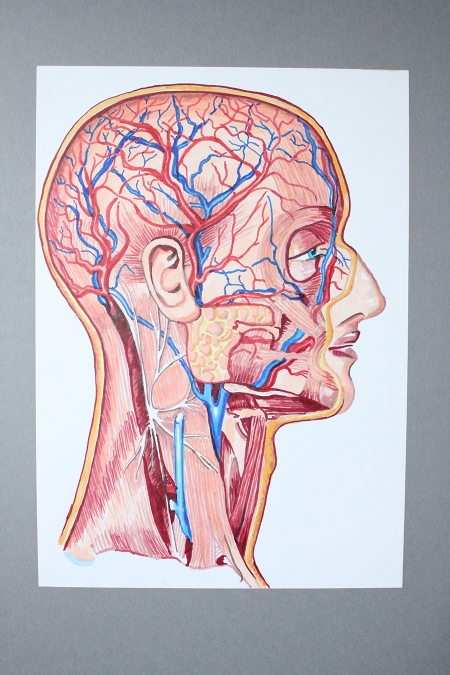
“HirniKoppic”, Copic Markers on paper, by artist “nettwürg” on the occasion of the rumors about the possibility of closing the Medizinhistorisches Museum (Berlin Medical Historical Museum) of the Charité.
Using Digital Holographic Microscopy (DHM) researchers of EPFL gathered quite some interesting images from inside the brain:
->Holograms Reveal Brain’s Inner Workings.
When do we get to see brain images from image imaginations? and when can others recognize these?
posted by nad | 3d, bio, communication, computer vision, nano, perception, software, visualization | No Comments »
Saturday, June 25th, 2011
I am currently writing some product descriptions for the US based (sustainable) design/green architecture blog Inhabitat, here is a link to the first description -> a lamp by Miriam Aust.
posted by nad | 3d, art and design, communication, environment | No Comments »
Wednesday, July 7th, 2010
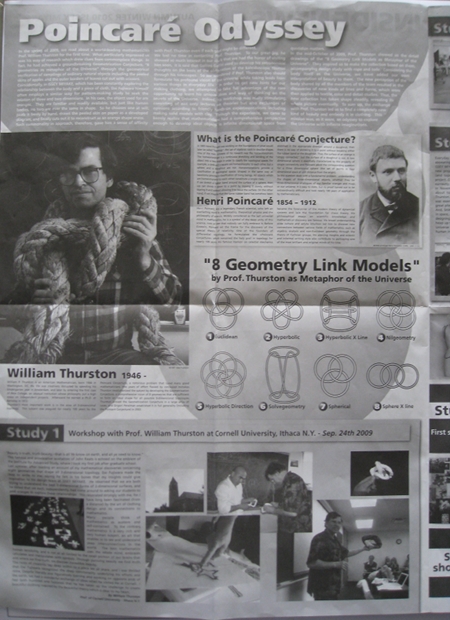
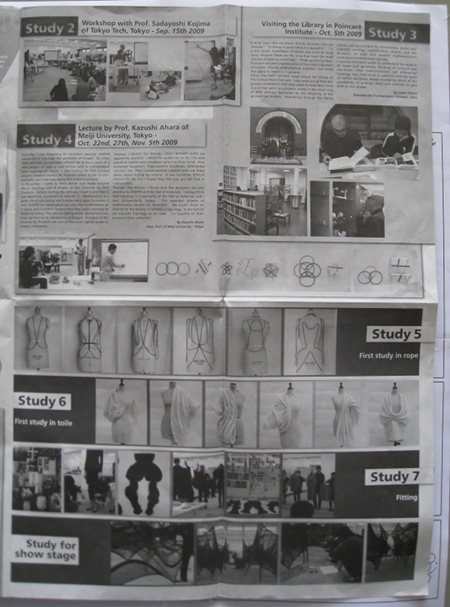
Last time when I was in Göttingen I found a poster at the math department documenting an art science collaboration between mathematics professors William Thurston, Kazushi Ahara and Sadayoshi Kojima on one side and a team around clothing designer Issey Miyake, notably including chief designer Dai Fujiwara of Issey Miyake (here a link to a partial version of the poster, see also absnews article by Jenny Barchfield). A result of this collaboration is that the Issey Miyake Fall-Winter 2010-2011 ready-to-wear collection is inspired by the geometrization conjecture.
From the poster:
In the mid-October of 2009, Prof. Thurston showed us the detail drawings of the “8 Geometry Link models as Metaphor of the Universe” They inspired us to make the collection based on them, accompanying design study with rope and toile. Considering the body itself as the Universe, we have added our own interpretation of beauty to them. The new perception of the body shared by all the members of the team resulted in the discoveries of new lines and forms, which were then applied to textile, color and detail studies. Thus the new collection has taken shape steadily, revealing its whole picture eventually. To sum up the exchange with Prof. Thurston led us to find a completely new kind of beauty and embody it in clothing. This mission was, as it were, an odyssee to explore the Universe with infinite imaginations.
The geometrization conjecture roughly says (I am not an expert on this) that a three dimensional volume form without boundary (a two dimensional analog of such a form would be for example the surface form (i.e. the “skin”) of a ball or the surface form of a doughnut) can be decomposed into “pieces” which have one of 8 characteristic “geometric structures”, which means roughly that in a small neighbourhood of any such “piece” there is – out of only 8 characteristic ways – one specific way to measure length. A theorem states that any three dimensional (oriented) volume form without boundary can be obtained by cutting a “thick” (that is instead of a rope take a ribbon) link out of a three dimensional sphere. Thus you can characterize special types of three dimensional volume forms (here: “the pieces”) by assigning a link to them. This is – by what I understood sofar- why there are 8 links (or link models) on the poster – they characterize the 8 types of possible “pieces”, which built up three dimensional volume forms without boundary.
Why do they call these 8 links “Metaphor of the Universe”? I can only make wild guesses, which sound rather like science fiction than science: Maybe if you imagine the space of the universe to be eventually such a three dimensional volume then by cutting it into pieces (may be along black hole horizons huh?!) and “measuring distances” (determine a metric) one could make deductions about the actual form of the universe? Or – reversely by making assumptions about the form of the universe (like e.g. that its space is a three sphere) one may get informations about what could be inside black holes…given that one finds all black holes…(this is just a funny joke).
But joking aside – I think they call it Metaphor of the Universe because these simple 8 links may be used to describe quite complicated things.
->wikipedia link math and fiber arts
posted by nad | 3d, art and design, communication, japan, math, physics, procrastination, trips, Uncategorized, visualization | 1 Comment »
Sunday, January 17th, 2010
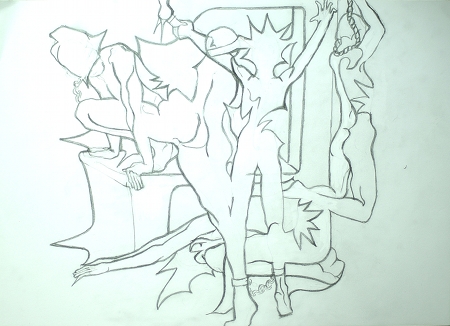
“End of Liberty”, artist: Endengelman John Glonnriff”
Vlad Alexeev had created a website called Impossible World which collects “impossible figures”, from Vlad Alexeev’s website:
Since some time I became interested in such artworks and figures that look usual at a first sight, but there is something wrong with them if you look at them more attentively. For me, the most interesting such figures are “impossible figures” which make an impression that they cannot exist in a real world.
I wanted to know more and tried to find some information about these figures in the Internet. I found numerous sites containing three or four different impossible figures, but there was no site devoted exclusively to the study of impossible figures. During this pursuit I made the acquaintance of impossible figures of Swedish artist Oscar Reutersvärd and images of Dutch artist M.C. Escher.
posted by nad | 3d, animation, art and design, communication, perception, visualization | No Comments »
Wednesday, July 15th, 2009
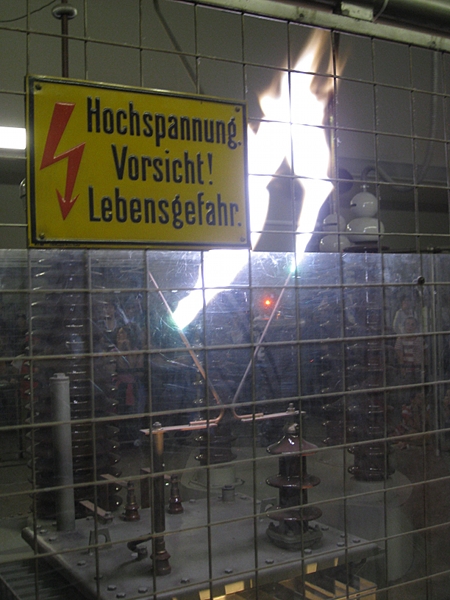
Last weakend we were doing a visit to the Deutsche Museum.
(more…)
posted by nad | 3d, architecture, art and design, climate, communication, environment, perception, physics, software, trips, visualization | No Comments »
Tuesday, May 5th, 2009
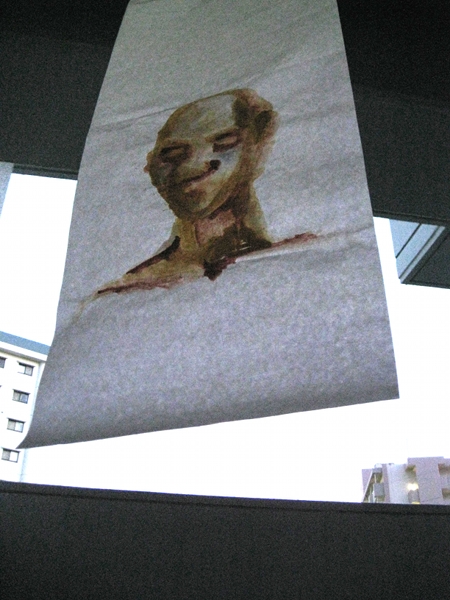
“2 D blacklight transparency beween 3-D house sequences” artwork by Angela Travis
A short remark: If I should not answer a comment to this blog then the reason for this is definitely not because I want to be unpolite, but because among others I am currently very busy. Sometimes it just may take a while, because some things have to be found out first, like for the case of this comment by a randform reader called H. Düppel, who was complaining that I am doing marketing for a commercial software called Poser.
This blog here receives no payments from any place, on the contrary it costs me actually quite a bit, so if I should talk about a commercial product over here then this is for no marketing reason, but out of a pure personal interest. Moreover I actually rather prefer not to talk too much about commercial things, because I dont like to be part of a marketing campaign, but as said I am not dogmatic about this. So here – so to say as a balance to my previous link to the software poser..:)..a link to the open source software make human, which seems to implement (or is going to implement) the same or better features as Poser.
posted by nad | 3d, animation, art and design, communication | No Comments »
Thursday, January 1st, 2009
randform wishes a happy new year to everybody!
just be careful – in particular given the rather bleak economic outlooks it will get even more easy to loose oneself in dreamworlds, so I wouldn’t wonder if the boom of the game industry is going to continue. In this TED video (via serious games) David Perry describes the evolution of video games, however of special interest in this video may be an -what he calls opinion of a student- which is a (realistic?) documentary about a self acclaimed video game addict (second part of the talk, the whole talk is about 20 min). The documentary describes the cognitive changes which are due to excessive video gaming.
posted by nad | 3d, animation, architecture, art and design, communication, economy, environment, games, perception, software, trips, visualization | No Comments »
Tuesday, December 23rd, 2008
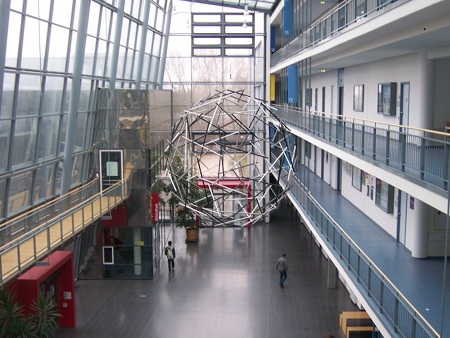
Last friday I attended a talk, which was organized by the munich center for nanoscience. The talk was given by Tim Liedl from the Shih Laboratory.
(more…)
posted by nad | 3d, architecture, art and design, bio, math, nano, physics, procrastination, visualization | 2 Comments »

